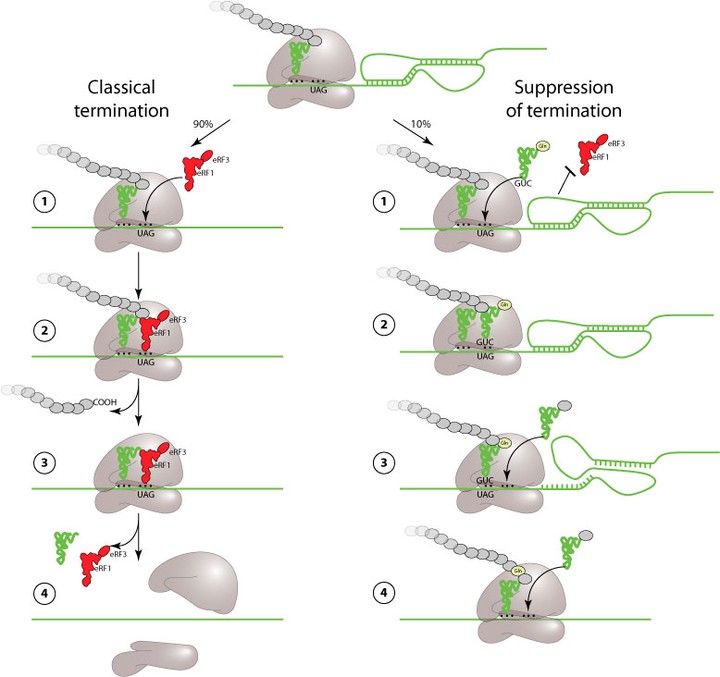Modulation of Stop Codon Read-Through Efficiency and Its Effect on the Replication of Murine Leukemia Virus
 Image credit: ViralZone
Image credit: ViralZone
Abstract
Translational readthrough—suppression of termination at a stop codon—is exploited in the replication cycles of several viruses and represents a potential target for antiviral intervention. In the gammaretroviruses, typified by Moloney murine leukemia vi- rus (MuLV), gag and pol are in the same reading frame, separated by a UAG stop codon, and termination codon readthrough is required for expression of the viral Gag-Pol fusion protein. Here, we investigated the effect on MuLV replication of modulating readthrough efficiency. We began by manipulating the readthrough signal in the context of an infectious viral clone to generate a series of MuLV variants in which readthrough was stimulated or reduced. In carefully controlled infectivity assays, it was found that reducing the MuLV readthrough efficiency only 4-fold led to a marked defect and that a 10-fold reduction essentially abol- ished replication. However, up to an 8.5-fold stimulation of readthrough (up to 60% readthrough) was well tolerated by the virus. These high levels of readthrough were achieved using a two-plasmid system, with Gag and Gag-Pol expressed from sepa- rate infectious clones. We also modulated readthrough by silencing expression of eukaryotic release factors 1 and 3 (eRF1 and eRF3) or by introducing aminoglycosides into the cells. The data obtained indicate that gammaretroviruses tolerate a substantial excess of viral Gag-Pol synthesis but are very sensitive to a reduction in levels of this polyprotein. Thus, as is also the case for ri- bosomal frameshifting, antiviral therapies targeting readthrough with inhibitory agents are likely to be the most beneficial.